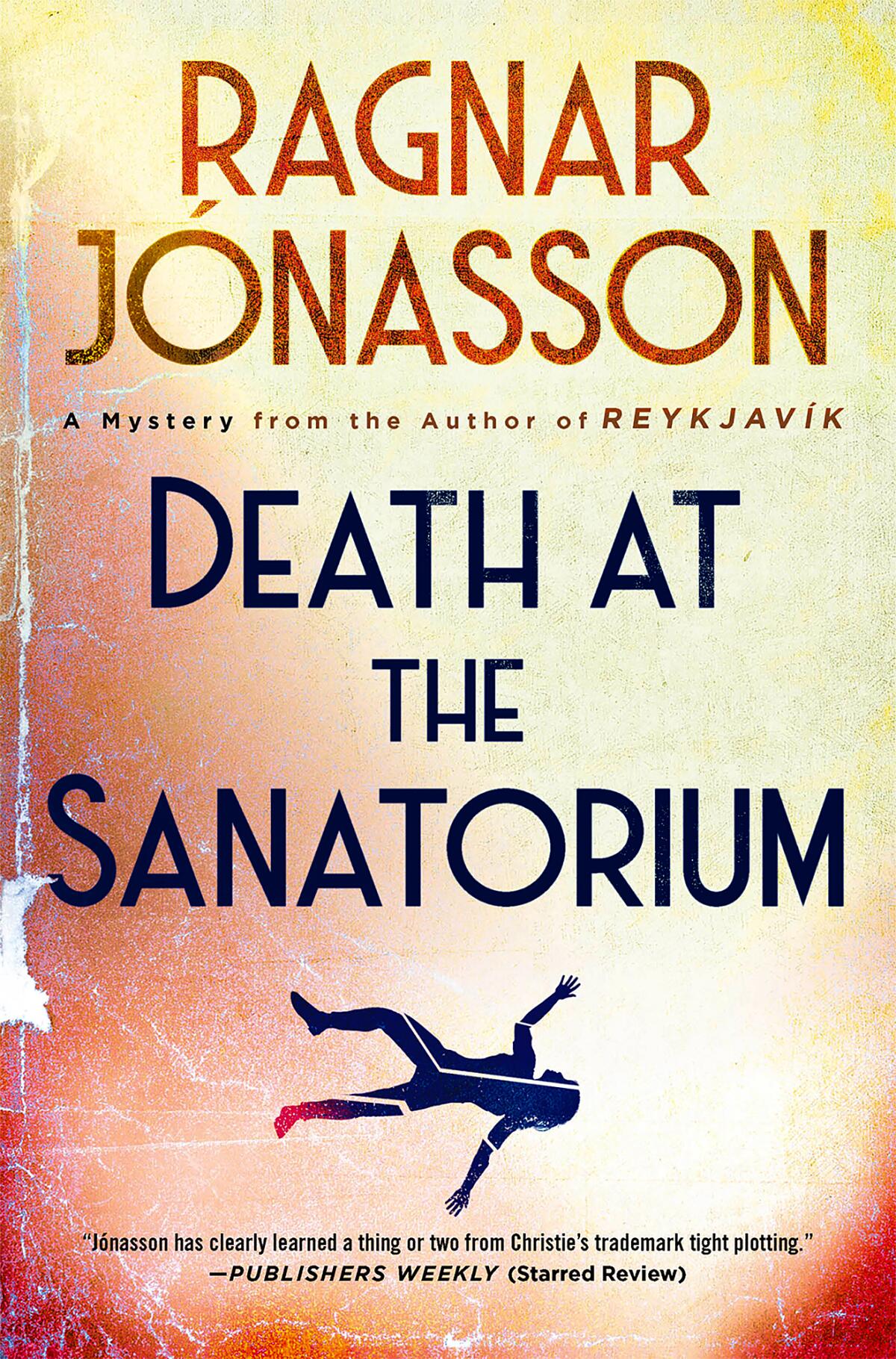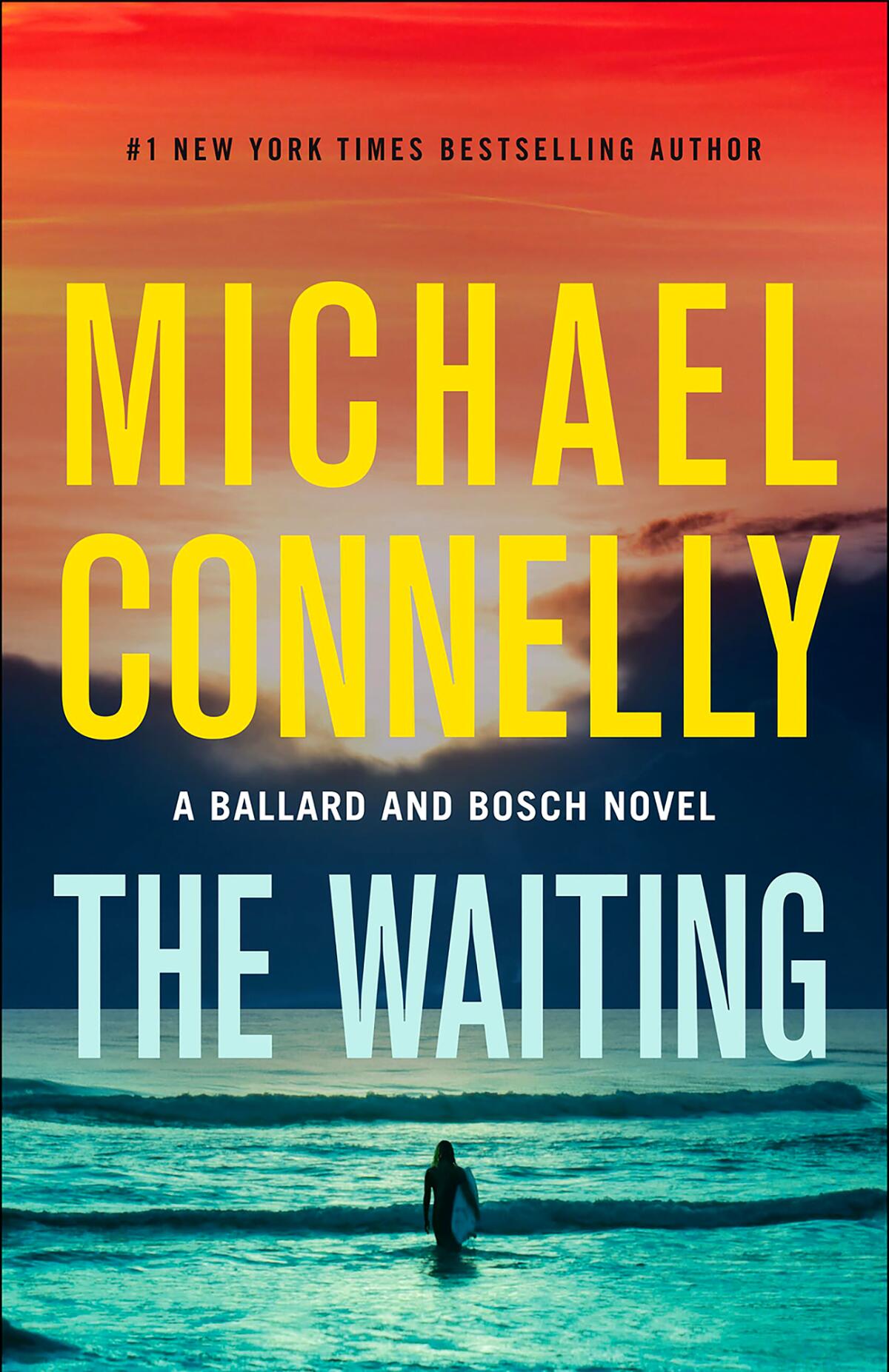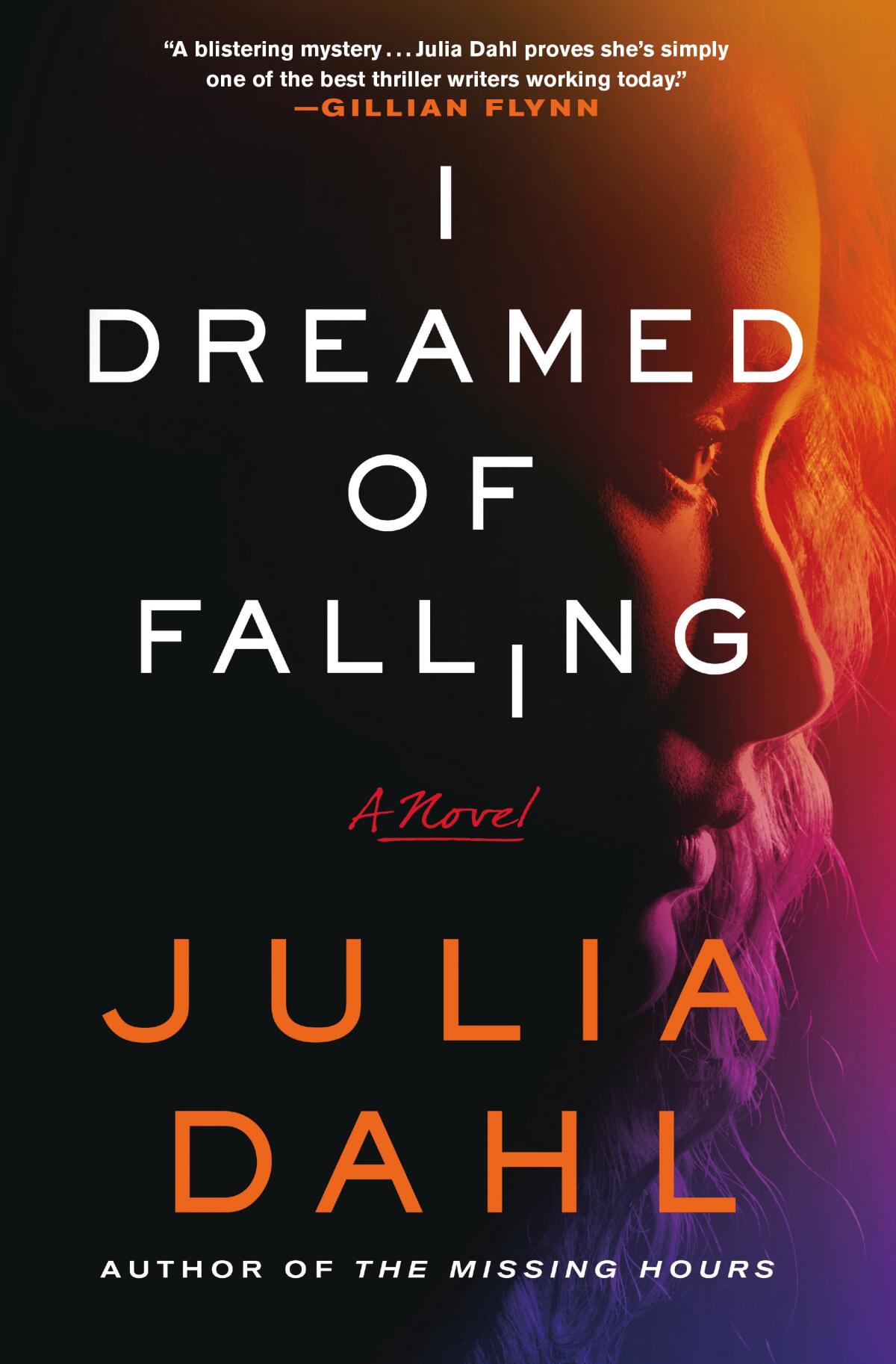5 mysteries to read this fall

- Share via
Dying to Know
Mystery Writers Answer Burning Questions
If you buy books linked on our site, The Times may earn a commission from Bookshop.org, whose fees support independent bookstores.
Police procedurals are on the menu in three compelling fall mysteries, but leave room for a rich multi-character tale featuring a small-town reporter and an engaging Hanukkah anthology that scrambles the holiday’s traditions into eight so-bad-they’re-good nights.

Fatal Intrusion
By Jeffery Deaver and Isabella Maldonado
Thomas & Mercer: 444 pages, $29
Out now
This first-time collaboration starts with some brilliant misdirection in introducing Dennison Fallow, who viciously kills a man in San Diego. He is thwarted by his next victim, Selina Sanchez, a quick-thinking young student he attacks in Perris. She learned her self-defense and perp-identification skills from her big sister, Carmen, an agent with Homeland Security Investigations who takes a leave to get to the bottom of the attack. For off-the-books assistance, she calls a man with whom she has a complicated past. Jake Heron is a university professor and “intrusionist,” “an academic who worked to safeguard private companies and governments and individuals.” When these two team up, the fun really starts as the layers of red herrings and types of intrusion Jake advises his clients to avoid are peeled back to reveal a conspiracy much larger than the serial killer trope that jump-starts the novel.
Deaver and Maldonado have crafted a white-knuckle ride, although its forward momentum is undercut at times by overexplaining in clumps of exposition rather than allowing the reader to catch up more organically. Even so, the insider’s look at an unfamiliar agency, its intricate plotting and complex Latina agent make “Fatal Intrusion” one that thriller readers will relish.
Fall’s most anticipated books include novels from Rachel Kushner, Sally Rooney, Danzy Senna, Michael Connelly and Richard Price.
Given your experiences as bestselling authors in your own rights, plus Isabella’s long career policing inside the Beltway, how did the two of you join forces? And how did you divide the writing duties?
Maldonado: We met at a writers’ conference a few years ago and immediately connected. Since we both write fast-paced thrillers with complex characters and layered, twisty plots, we thought, “Let’s give it a shot.”
Deaver: We devised the concept, extensively outlined, picked chapters to write and then — and this is essential — declared a no-ego zone and vigorously edited each other’s work. It was a true 50/50 collaboration.
Crime fiction is filled with serial killer tropes. What makes Dennison Fallow different?
Deaver: Dennison is a multifaceted character with sociopathic tendencies, but he’s not a clichéd bad guy. He’s true to the maxim “the villain is the hero of his own story,” which makes him fascinating to write as readers are given a peek into the inner workings of his mind. Without spoilers, while he roams the streets of Los Angeles, Riverside and Orange counties as an apparent serial killer, his actions are the springboard to the roller coaster and misdirection that follow.

Death at the Sanatorium
By Ragnar Jónasson
Minotaur Books: 320 pages, $29
Out now
At the heart of next-gen Nordic star Ragnar Jónasson’s latest (after “Reykjavik”) is criminology graduate student Helgi Reykdal, who in 2012 has returned to Iceland from the U.K. to work on his dissertation. His subject: the Reykjavik police department’s investigational procedures related to the 1983 murder of an elderly nurse in Iceland’s isolated north. The suicide of the chief physician at the former tuberculosis sanatorium shortly thereafter tied up that investigation with a neat bow for neophyte detective Hulda Hermannsdóttir and her boss. Decades later, Reykdal’s interviews with a small circle of those involved in the long-ago deaths gets smaller when one of them is killed, and his dissertation morphs into an all-consuming investigation. As Reykdal takes the investigative reins in the days leading up to his new job replacing Hermannsdóttir, his penchant for classic crime novels and a messy home life make him an endearing and relatable hero readers will be hungry to see again.
This summer’s crop of mysteries is bountiful and varied. Here’s a small sample of thrillers we’ll be reading in the next few months, along with answers to some ‘dying to know’ questions we’ve put to their authors.
Was it always your plan to write a Helgi Reykdal novel?
This idea came to me after I had finished writing the Hulda trilogy. I started wondering, “Who is this young man who took over Hulda’s office? What type of a person is he?”
How did Agatha Christie inform the creation of Helgi Reykdal?
Since I started translating her at age 17, Christie has been a great influence on me, with her incredible plotting and sense of setting. I’ve also been a keen reader of other Golden Age writers, including American authors such as Ellery Queen and S.S. Van Dine, who created some of the most brilliant mysteries of the genre. As soon as I created Helgi, I decided that he would be someone who loved books, in particular Golden Age detective stories. This is, of course, a reflection of my interests, but I also simply thought it might be a somewhat unusual trait for a detective. It also gave me an opportunity to introduce some of my favorite titles to readers and give the story a Golden Age feel.

The Waiting
By Michael Connelly
Little Brown and Co.: 416 pages, $30
Oct. 15
The LAPD’s Open-Unsolved Unit’s Det. Renée Ballard is moving forward with her ragtag team of volunteers and a caseload ranging from a sexual assault and killing of a South Los Angeles Black woman that got little attention under the leadership of Chief Daryl Gates to the “Pillowcase Rapist,” who went dormant almost two decades ago. Meanwhile, Ballard’s trying to quietly recover her badge, gun and wallet containing her police ID, the theft of which could be a career-limiting disaster should her superiors find out. She’s also juggling appointments with a therapist to cure her insomnia, which leads to exploring her abandonment issues and the effects of vicarious trauma. “You were a sin eater,” her therapist says. “You took in all of the horrors you saw on the job and kept them inside, and they came out in these symptoms we are seeing.”
Ballard is relieved when Maddie Bosch, now an LAPD patrol officer working in the Hollywood division, volunteers in the unit. Ballard could use another sworn officer, but retired Det. Harry Bosch’s daughter has a bigger agenda: She hopes to get fast-tracked to detective by pursuing a clue she believes is related to one of L.A.’s most notorious unsolved homicides. To say more would be to spoil the joys of watching Connelly meticulously guide Ballard and a young Bosch in cracking the case of a lifetime.
“The Waiting” blends exceptional crime-solving with law and order politics while furthering not only the development of Ballard and Bosch’s characters but also refreshing the series by providing a succession plan for the ailing Harry. The waiting is well worth it in this satisfying new direction for the Ballard-Bosch universe.
Jacquie Walters’ debut, ‘Dearest,’ is a horror novel about new motherhood, including the demands of a breastfeeding infant, as well as how postpartum hormones affect a woman’s psyche.
Why was telling this story at this point in the series important to you?
I just really love Renée Ballard and feel the need to fill in some of the blanks in her life. Maybe this happens when you know most of your writing days are behind you. You get this urgency. It also was dictated by some true events like the fires last year in Maui. There have been prior references to Ballard’s mother being somewhere in Maui and not in contact with her daughter. That kind of spurred me to include references to that and how they would come up in therapy brought on by Ballard’s insomnia. [Ballard’s Hawaiian heritage] was something I knew I had a duty to pursue in terms of presenting a full picture of this character. But I’ve put it off; call it author laziness. But the fires in Maui last year motivated me to finally get into it. I also have to admit I learned a lot reading my own daughter’s papers that she wrote for her master’s degree in psychology. After that, I was off to the races.
Without giving away the surprise, rookie cop Maddie Bosch stumbles upon clues related to one of the most infamous murders in L.A. history. Why was tackling such an iconic mystery a good one for the Open-Unsolved Unit?
Until this year when she retired, Det. Mitzi Roberts ran LAPD’s volunteer cold case unit. Mitzi is the direct inspiration for Ballard, and as such, my research for the character amounts to an ongoing conversation with Mitzi. So I was quite aware of the filing cabinet containing the old files, the suitcase that belonged to the victim and so forth. What I was hoping to do was take the real aspects of that horrible unsolved case and come up with a story that fit the known details but ultimately would add to the mythos of it being unsolvable at this point.

I Dreamed of Falling
By Julia Dahl
Minotaur: 352 pages, $29
Out now
Neophyte reporter Roman Grady’s life partner, Ashley Lillian, has overcome life-threatening childbirth and a long bout of postpartum depression and wants to resume teaching yoga and caring for her 4-year-old son, Mason. But the mothering role has been usurped by Roman’s mother, Tara, with whom the couple lives in Adamsville, N.Y., a small town undergoing a post-COVID gentrification. Dahl deftly shows the toll the young mother’s depression has taken on the family. Meanwhile, Tara, trying to make amends for the inadequate parenting of her only child, fears that Roman is depressed. A recent NYU J-school graduate, Roman deferred a prestigious fellowship with the L.A. Times to parent his and Ashley’s baby. Dahl shows how Roman’s skills are underused as the sole reporter for his Hudson Valley local paper that was purchased by a billionaire and led by an editor-publisher who just doesn’t get the mission. “Although his boss had to pretend to embrace the family-friendly nature of the town whose newspaper he ran,” Roman observes, “privately he was a man with a heart as atrophied as his calf muscles.” Roman’s also resentful and feeling somewhat slighted by Ashley, with whom he’s always had a sexually open relationship.
Then Ashley doesn’t come home one night after attending a drug-fueled party at her former girlfriend’s house. When Grady finds Ashley’s body the next day, the subsequent quest for answers sets off a chain reaction of recrimination and revelations.
With skill and compassion, Dahl has created a heart-wrenching drama of family dysfunction and small-town gentrification that makes “I Dreamed of Falling” a story greater than the sum of its parts.
With a memoir, a Broadway turn in ‘Moulin Rouge!,’ a planned tour and new music, Joanna ‘JoJo’ Levesque is back in control of her career.
What are the challenges in presenting your characters’ points of view while also advancing the plot and underlying mystery?
Balancing the two things that matter in a crime novel — creating a vivid world and set of characters and keeping the reader guessing about whodunit — is always a challenge. I love a good mystery, but I write books because I want to tell people’s stories and explore themes I think are important. In this case, the story I wanted to tell was of a nontraditional family. I knew my main characters were deeply flawed, but it was important to me that their messiness not be mistaken for poor character. I wanted to write from inside each of their heads so I could let their perspectives reveal that.
Why was Roman Grady a pivotal character in the novel and for you as a writer and journalism professor?
As I tell my students constantly, I am a journalism evangelist. I think being a reporter is one of the most important jobs in the world. For democracy to function, the people must be informed. It’s not a coincidence that our democracy is in peril just as our news ecosystem is crumbling. Since moving to a small town in 2019, I’ve become acutely aware of how the death of local news impacts communities. The people in power are still making all kinds of decisions about our lives, but suddenly no one is watching them and reporting back to the residents.

Eight Very Bad Nights: A Collection of Hanukkah Noir
Edited by Tod Goldberg
Soho Crime: 304 pages, $28
Oct. 29
Tod Goldberg, a UC Riverside writing professor and author, notes in the foreword of this stellar collection, “Sure, it’s a festive time, but after eight nights with the family, almost any exit sounds appealing, even those from this life.” His assembled group of writers, including Los Angeles Times Book Prize winner Ivy Pochoda, acclaimed horror writer Gabino Iglesias and screenwriter Stefanie Leder, make good on that observation by delivering multiple takes on those exits in ways that are poignant, dark and often hilarious. Among the standouts: Alta books editor David L. Ulin’s “Shamash” — its title taken from the little candle used to light others in the menorah — in a devastating story about a dutiful son and caregiver faced with a fateful choice. San Diego resident and frequent Times contributor Jim Ruland’s “The Demo” manages to be a magical history tour of L.A. independent record companies and a story of revenge intertwined with the holiday’s festivities. And Goldberg’s titular story as well as brother Lee’s “If I Were a Rich Man” — the latter involving a Jewish ex-con, now a dementia patient in a retirement home in Merced — bring on the funny while being wildly observant.
Eric Roberts’ memoir isn’t a Hollywood reclamation job designed to kick-start a once-buzzy career. Roberts knows all too well that his erratic behavior damaged his relationships with friends and family, including his sister Julia Roberts.
Which story surprised you?
James D.F. Hannah’s story “Twenty Centuries” blew me away. Writing an actual procedural mystery in the space of a short story is exceptionally difficult and to make it layered, topical and character-driven all at once? Masterful. The other big surprise was how hard it was to edit my own brother’s work. Particularly since I told him the story couldn’t be more than 25 pages and he sent me 45.
In your story, you again tap that rich vein of Jewish gangsters and wannabes I got to know in the “Gangsterland” novels and the short story collection “The Low Desert.” Was Jack Katz based on any real-life newscasters you knew in the Coachella Valley?
My father’s side of the family were all in the furniture business. After losing his network job in Portland, my dad ended up doing some time working for his father, a position he was ill-suited for, to say the least. So the furniture business is in my blood a bit, as well as local TV news, and you mix that with my proclivity for exploring Jewish organized crime and, well, you’ve got yourself a recipe for a (long) short story.
More to Read
Sign up for our Book Club newsletter
Get the latest news, events and more from the Los Angeles Times Book Club, and help us get L.A. reading and talking.
You may occasionally receive promotional content from the Los Angeles Times.










